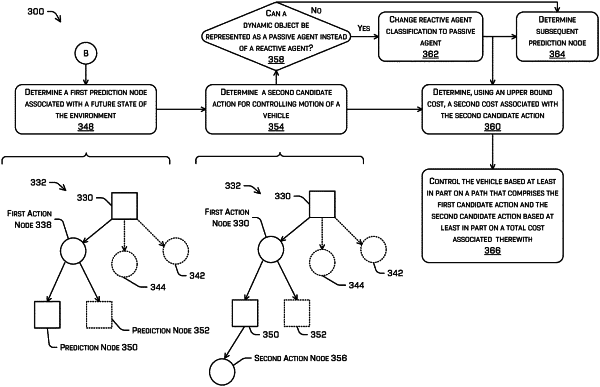| CPC B60W 60/0027 (2020.02) [G05B 13/0265 (2013.01); B60W 2554/402 (2020.02); B60W 2554/4045 (2020.02)] | 20 Claims |

|
1. A method comprising:
receiving route data associated with a start position and an end position in an environment;
receiving sensor data from a sensor;
determining, based at least in part on the sensor data and the route data, a first candidate action for controlling motion of a vehicle;
determining a first cost associated with the first candidate action, the first cost being based at least in part on a lower bound cost, the lower bound cost being an estimate of a lowest cost of an action to alter a first state of the vehicle at a time associated with a beginning of the first candidate action;
determining, based at least in part on the first candidate action and the sensor data, a first prediction associated with a first state of the environment, the first prediction comprising a first state of an object in the environment at a future time;
determining, based at least in part on the first prediction and the route data, a second candidate action for controlling motion of the vehicle;
determining a second cost associated with the second candidate action, the second cost based at least in part on an upper bound cost, the upper bound cost being an estimate of a cost to execute a default action;
alternately applying one of the lower bound cost and the upper bound cost to one or more subsequent candidate actions; and
controlling the vehicle based at least in part on:
a path that comprises the first candidate action and the second candidate action; and
determining that a first total cost comprising the first cost and the second cost is less than a threshold or less than a second total cost associated with a second path comprising at least one candidate action that is different from at least one of the first candidate action or the second candidate action.
|